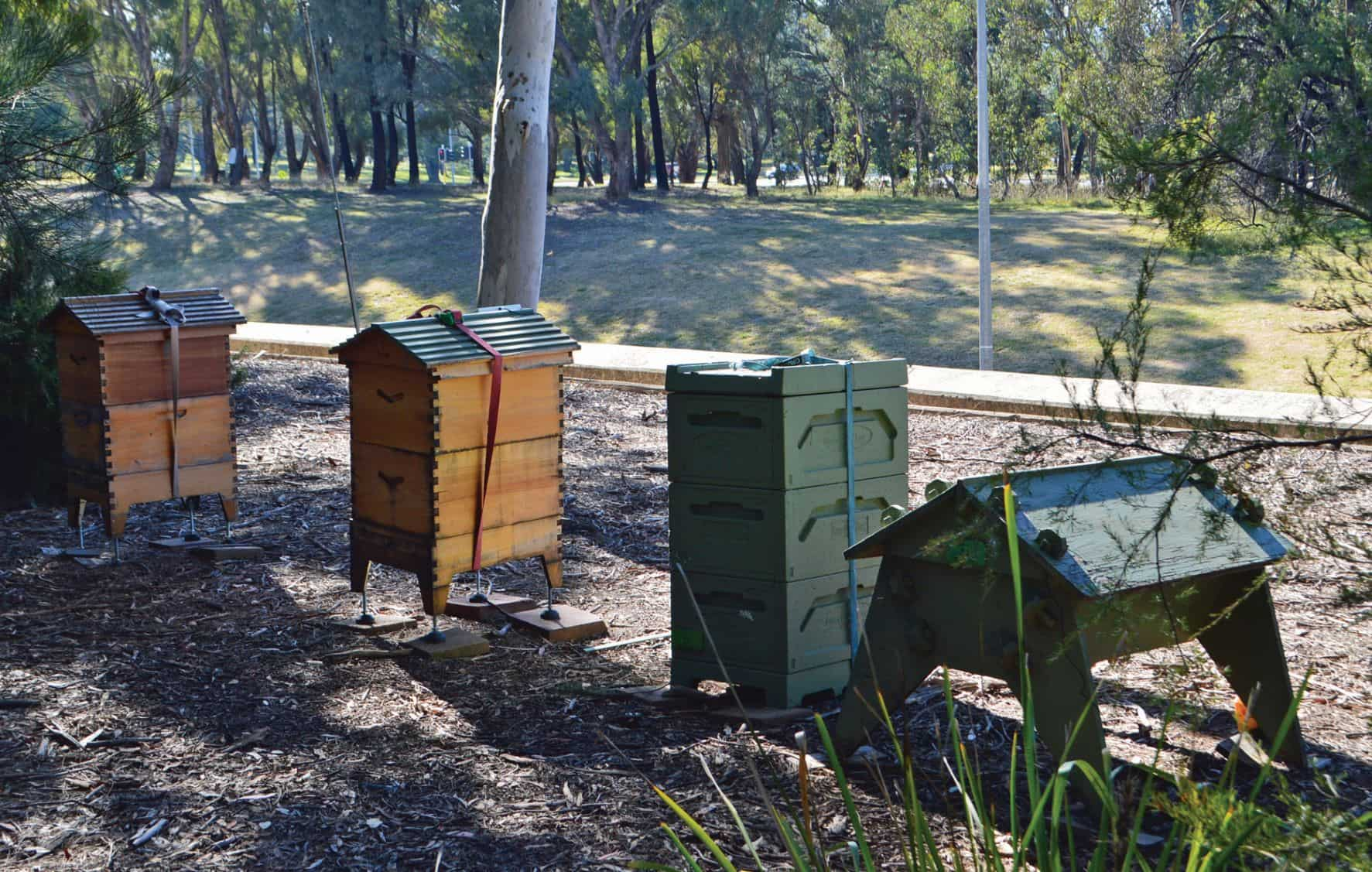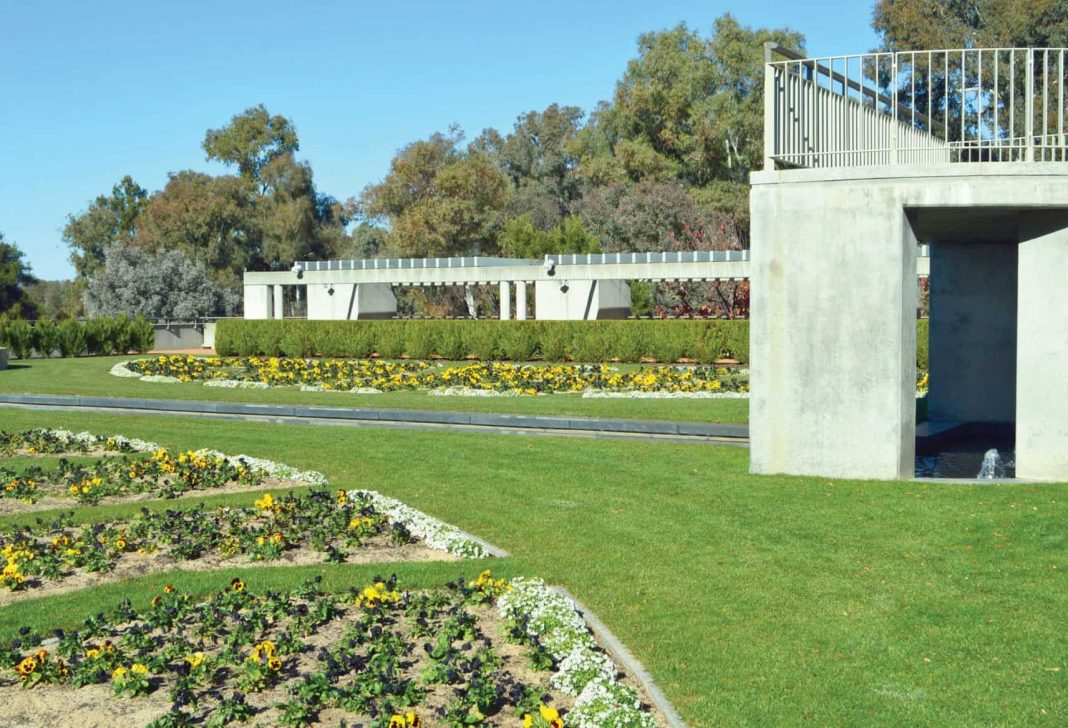I was recently lucky enough to join a tour of Parliament House gardens as part of World Bee Day (20 May). Our guides were experienced head gardener Paul Jansen and volunteer head beekeeper Cormac Farrell.
Paul said the grounds of Parliament House cover 33 hectares, including 23 hectares of gardens. The peripheral native gardens, where we spent much of our tour, cover a leisurely 9 hectares. To conserve precious water, the native gardens are no longer irrigated, excepting during the establishment phase.
Cormac pointed out a beautiful red box (Eucalyptus polyanthemos) on our walk, saying it’s an excellent protein source for honeybees, and that it helps the hive build their colony in readiness for spring. An equally lovely red ironbark (Eucalyptus sideroxylon) was described as being a useful winter foraging tree for pollinators, including the honeybee.
There are multiple beehives in the peripheral native gardens at Parliament House, including open source (Flow Hive), top bar (Kenyan) and well-insulated polystyrene (BeeBox) styles, the former two of which are easy to inspect and with minimal disturbance to bees when harvesting honey. There is also a seasonal native stingless beehive, which holidays at Government House in Sydney over winter, for the warmth and comfort of its inhabitants.

The hives are located in a sunny protected position with unobstructed access for efficient foraging and the safety of us human folk. Cormac has attached a BuzzBox beekeeping App to the hives for external monitoring of conditions such as hive temperature, activity of the colony and whether the queen bee is in residence or not.
Cormac said the honey produced from the hives has an especially low residue due to IPM (Integrated Pest Management) practices at Parliament House, including the use of cultural control methods only in the peripheral native gardens. In fact, it’s some of the purest honey to have been tested in Australia.
Cormac shared some fascinating bee facts with us on the walk, including:
- It takes European honeybees 2 million flower visits to produce 1kg of honey.
- One of a bee’s final tasks towards the end of its life is to scout for a food source.
- Bees perform what is known as a waggle dance to direct the hive to a food source. Each waggle ‘circuit’ signals approximately 200m of travel required to reach the food source. The angle of the waggle indicates the direction for the bees to fly.
- Canberra is home to approximately 200 species of native bees.
Read more:



